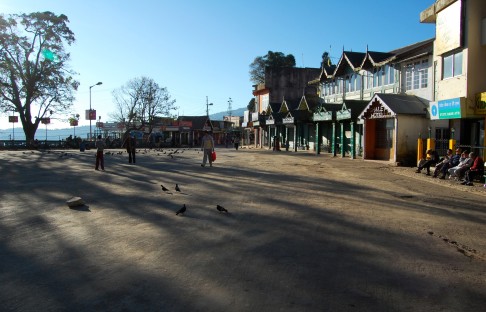
Not the Darjeeling Limited: The story of a post-colonial mess
Yonden Lhatoo laments the deterioration of his hometown after the end of British colonial rule, contrasting it with Hong Kong's success story
On holiday in Darjeeling, I've been thinking about how little people in Hong Kong know about this world-famous tourist destination, my original hometown before I settled down in our city.
To begin with, most people these days wrongly identify it with Hollywood director Wes Anderson's whimsical 2007 film, The Darjeeling Limited.
That offbeat comedy was shot on location in the northern Indian state of Rajasthan, and the desert landscapes, camels and turbaned folk depicted on screen have absolutely no connection with the Darjeeling I was born in.
It's the equivalent of filming Chungking Express in Inner Mongolia and everyone assuming that's what Hong Kong is like.
Darjeeling is located within India's geographical borders but was once part of the independent kingdom of Sikkim, with China, Nepal and Bhutan as neighbours.
Like Hong Kong, Darjeeling was ruled by the British during the heyday of the empire, but that's where the similarity ends.
At a height of more than 2,000 metres above sea level, it was developed as a town and municipality back in the mid-19th century by the colonial British administration.
It was one of several sanatoriums and summer resorts resembling "Little Englands" that the British built on the hill tops of northeastern India, capitalising on the cool weather, lush green landscapes and stunning Himalayan vistas to escape from the oppressing heat and dust of the plains when they ruled the subcontinent.
When I was a little boy growing up in Darjeeling, it still enjoyed its historical reputation as the "Queen of the Hills". Not any more.

The original infrastructure that colonial administrators left behind when India gained independence in 1947 was a marvel of British planning and engineering. But it was designed for a population of only 10,000, which has grown 20-fold or more.
The end result is widespread poverty, unemployment, overcrowding, and a shortage of basic necessities such as water and electricity.

Once you catch a glimpse of the breathtaking Kanchenjunga, the world's third-highest mountain, you'll understand its appeal.
It's also famous for the Darjeeling Himalayan Railway, a Unesco world heritage site which features "toy trains", named for their size and picture-book appearance, which run on steam engines that are more than 100 years old.
The name of the railway is the only connection to the Hollywood film.
And, of course, it's famous for its tea as well. The British sold opium to China and bought tea, which they grew through an expansive network of plantations and marketed around the world under the Darjeeling brand.
As a schoolboy in the mid-1980s, I witnessed the beginning of Darjeeling's descent into an endless morass when the ethnic Gurkha majority, long subjugated and marginalised by Bengali administrators from their seat of power in Calcutta, launched a violent movement for a separate state of their own.
They're still fighting for that right, but successive generations of shamelessly corrupt and self-serving local political leaders, bribed and manipulated by Machiavellian state and central governments, have ensured it remains forever elusive.

One is a shining example of post-colonial success, an economic powerhouse and one of the most dynamic cities in the world.
The other is a basket case which didn't have the obvious advantages that put Hong Kong on a different level, but did not have to end up in such a sorry state if it had been run properly after its colonial rulers left.
It's a bittersweet holiday.

